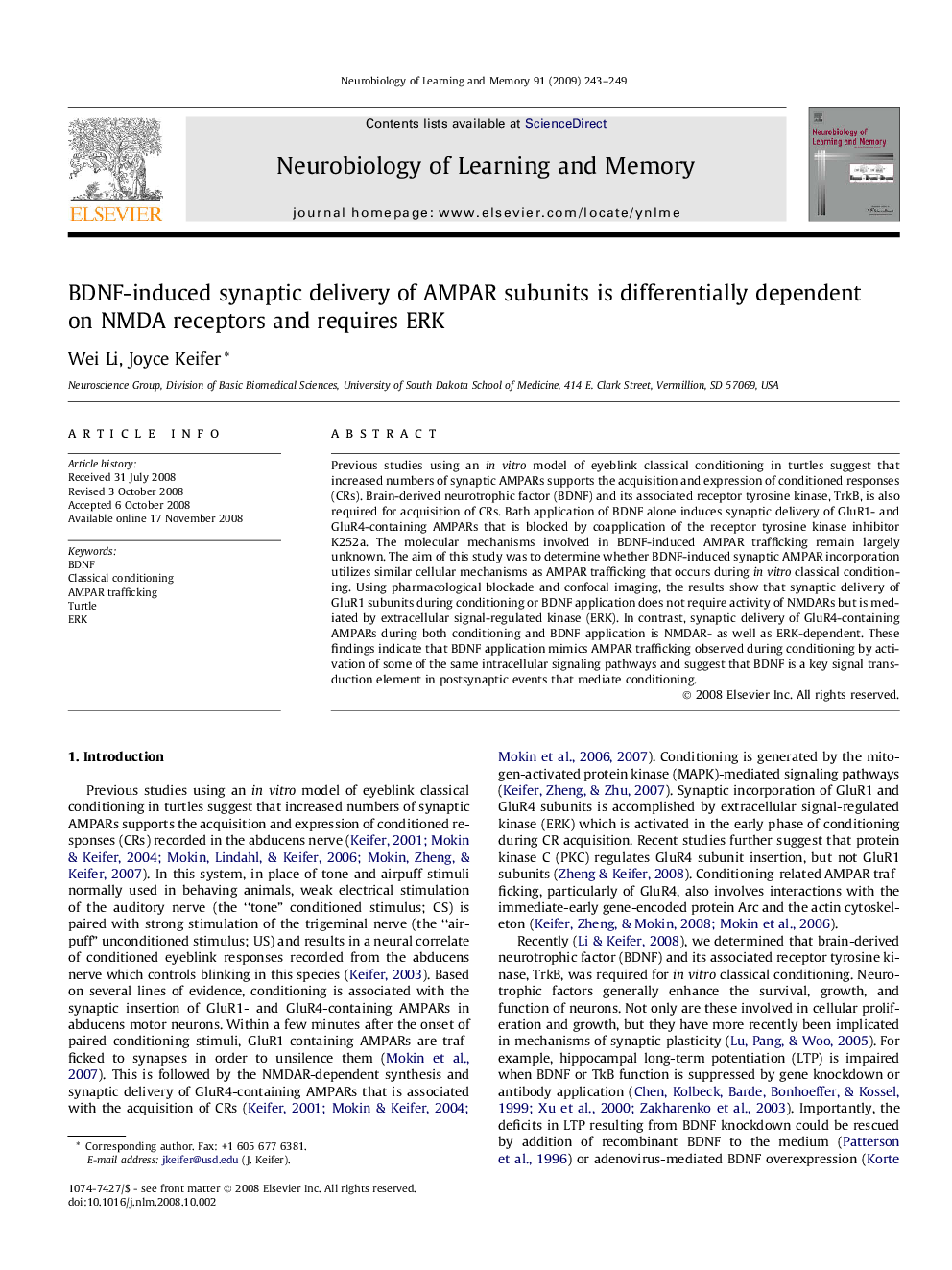| Article ID | Journal | Published Year | Pages | File Type |
|---|---|---|---|---|
| 936905 | Neurobiology of Learning and Memory | 2009 | 7 Pages |
Previous studies using an in vitro model of eyeblink classical conditioning in turtles suggest that increased numbers of synaptic AMPARs supports the acquisition and expression of conditioned responses (CRs). Brain-derived neurotrophic factor (BDNF) and its associated receptor tyrosine kinase, TrkB, is also required for acquisition of CRs. Bath application of BDNF alone induces synaptic delivery of GluR1- and GluR4-containing AMPARs that is blocked by coapplication of the receptor tyrosine kinase inhibitor K252a. The molecular mechanisms involved in BDNF-induced AMPAR trafficking remain largely unknown. The aim of this study was to determine whether BDNF-induced synaptic AMPAR incorporation utilizes similar cellular mechanisms as AMPAR trafficking that occurs during in vitro classical conditioning. Using pharmacological blockade and confocal imaging, the results show that synaptic delivery of GluR1 subunits during conditioning or BDNF application does not require activity of NMDARs but is mediated by extracellular signal-regulated kinase (ERK). In contrast, synaptic delivery of GluR4-containing AMPARs during both conditioning and BDNF application is NMDAR- as well as ERK-dependent. These findings indicate that BDNF application mimics AMPAR trafficking observed during conditioning by activation of some of the same intracellular signaling pathways and suggest that BDNF is a key signal transduction element in postsynaptic events that mediate conditioning.
